|
Today, Greenwater Valley looks like a plain and empty expanse dotted with creosote bushes, cactus, and the occasional wildflower. However, this valley was once home to the town of Greenwater, a bustling mining camp called the "Greatest Copper Camp on Earth." 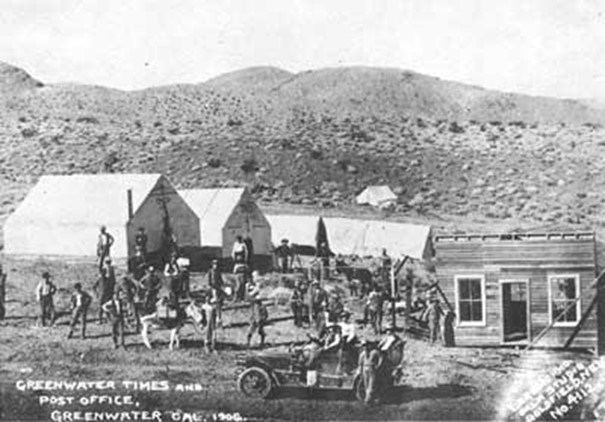
Photo by John A. Latschar Copper was first discovered in Greenwater Valley around 1904 or 1905. Who found the original vein is unknown, but many people tried to take credit for it, especially after it was called "the world's greatest copper deposit." Among these are well-known prospectors Arthur Kunze, Shorty Harris, Phil Creasor, and Fred Birney. 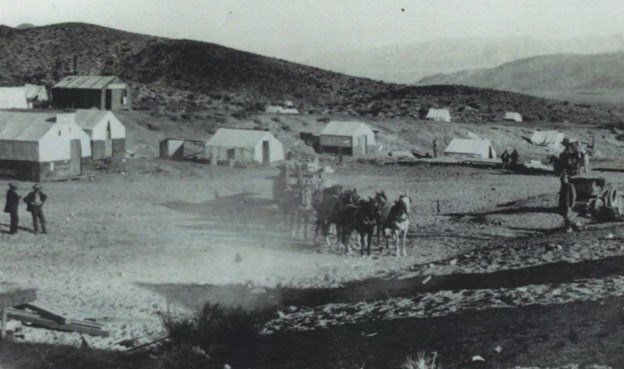
Photo by John A. Latschar Life in GreenwaterGreenwater was home to 2,000 people. Most lived in tents. The twenty buildings in town included restaurants, saloons, general stores, lodging houses, a bank, barbershops, and even a shoe repair shop. 
Greenwater had two newspapers and a magazine. The Greenwater Times was started by James Brown and Frank L. Reber (who had started Las Vegas' first newspaper), and the Greenwater Miner was started by Major John F. A. Strong, who would later become the governor of Alaska. The Final Days of GreenwaterDuring its peak, Greenwater attracted all kinds of people who wanted to buy stock in the mines, including the steel giant Charles Schwab. However, Greenwater was not as rich in copper as it was made out to be. Stock prices went from $5.25 a share to below 50 cents a share in a manner of months. Those who held stock in Greenwater lost tens of millions of dollars. Because of all the money lost, Greenwater was known as “the monumental mining-stock swindle of the century.” By 1909, the last few mines at Greenwater closed. 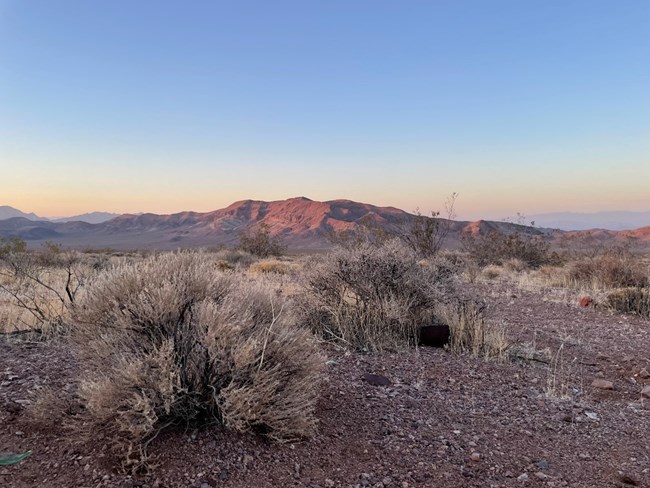
Courtesy of Autumn Smith Greenwater TodayWith only two ruins of buildings left, it is hard to picture the once bustling mining town. But we can still tell where people lived and were the main towns were located due to old photographs and by looking at artifacts left behind. 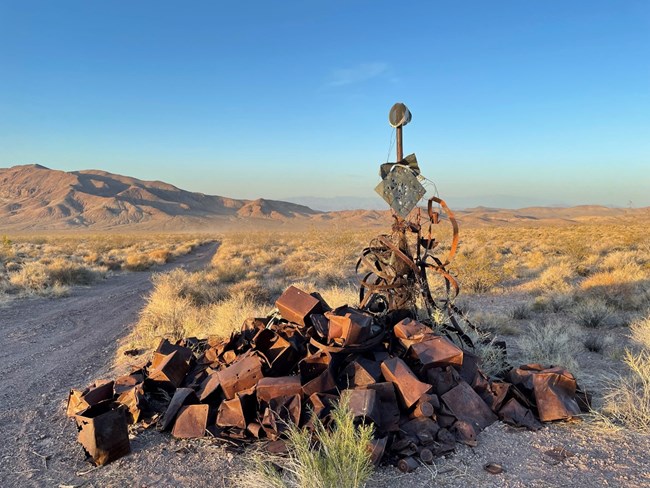
Courtesy of Autumn Smith Some visitors to the site and similar historic areas might not understand the importance of artifacts and may just see them as pieces of trash. Therefore, they might take artifacts or move them to create “trash” sculptures, as pictured here. Since the location of artifacts is as important as the artifacts themselves, removing an artifact from its original location, even if it is just moving a few feet, can destroy the potential information that the artifact can convey. 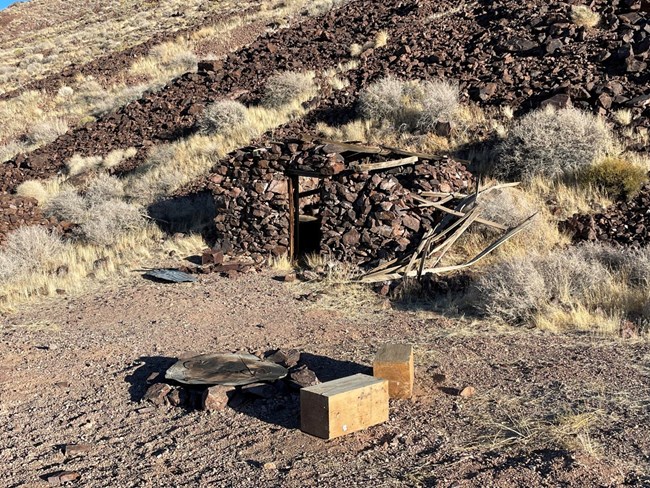
Courtesy of Autumn Smith Greenwater has recently been the victim of vandalism by visitors. At the original Greenwater Site there were two standing buildings. After more than one hundred years of wind and storms, one building still had an intact roof. In September 2021, it was discovered that a visitor tore the roof off of the building and burned it as firewood in an illegal campfire, destroying this piece of history.
This page written by Autumn Smith, as a National Honors Society service project.
|
Last updated: June 5, 2022
